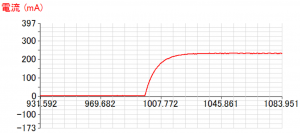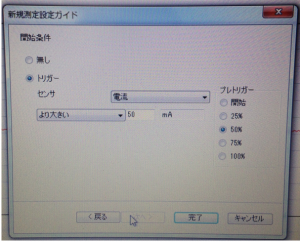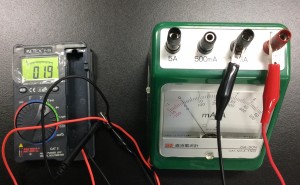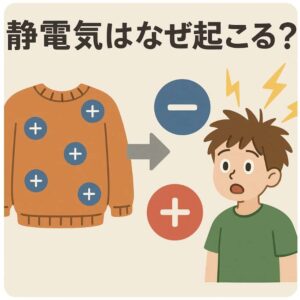The Coil’s Secret: How to Catch the “Hold On a Minute!” Lag of Self-Induction
I’m Ken Kuwako, Science Trainer. Every Day is an Experiment.
You flip the switch to “On!”, and electricity flows instantly with a “Zap!” A small light bulb lights up immediately. This is what we consider “normal.” But what if there was a “contrarian” component inside the circuit?You might flip the switch to say, “Time to flow!”, but this component would say, “Hold on a minute!” and refuse to let the current flow immediately… This mysterious component is the “inductor” (or “coil”). If a circuit only had regular resistors, the current would reach its maximum value the moment the switch is closed. However, when a coil is present, the current doesn’t flow instantly; instead, it gradually and smoothly increases.This phenomenon of resisting the flow with a “Hold on!” is called “Self-Induction.”
The “Contrarian” Nature of the Coil
So, why does the coil behave this way? It’s because the coil has a nature that “hates change.” When you flip the switch, the current starts to flow, generating a “magnetic field” around the coil. The coil dislikes this “new magnetic field being generated (i.e., changing)”. To counteract this change, it incredibly generates a “voltage in the opposite direction (back electromotive force)” all by itself! This reverse voltage acts like a “dam,” temporarily blocking the incoming current. That’s why the current doesn’t immediately jump to its maximum when the switch is closed, but instead increases slowly.
Capturing the Invisible “Lag”
The problem is that this self-induction phenomenon is over in just a split second. If you connect a standard ammeter—one that we can observe with our eyes—the needle will only move with a quick “thump,” making it virtually impossible to observe this “gradual increase.”Therefore, in today’s lesson, we used a scientific sensor called “EasySense” by Narika to visualize the current change as a graph, successfully capturing this fleeting moment of “lag.” Today, I’ll introduce that experiment.
Science Recipe: Snapping a Photo of the Coil’s “Lag”
Materials Needed
- Resistor (10Ω)
- Two Batteries (3V)
- Inductor Coil (0.5H)
- Toggle Switch
- EasySense (Current Sensor)
EasySense is an easy-to-use sensor device for experiments. We used a version that connects to a PC. Connecting it to a projector allows students to confirm the experiment in real-time. Connecting it to an interactive whiteboard would be even better!
Procedure
Create a circuit connecting the coil, batteries, resistor, and EasySense (Current Sensor).Set the measurement time to 2 seconds and the measurement interval to $500\ \mu\text{s}$ (microseconds—that’s $1/2000$th of a second!).Set the trigger (the condition for starting measurement) to $50\ \text{mA}$. We set the pre-trigger to $50\%$ (This allows us to record the “switch OFF” state before the trigger occurs).
Experiment Results: We Saw It! The Current’s “Gentle Slope”
The experiment produced the following graph: Look closely! The switch is closed around the middle of the graph, but the current did not instantly jump to its maximum value. Instead, you can see the current value increasing smoothly, as if climbing a gentle slope. This is the exact moment the coil is resisting the flow with its “Hold on a minute!” action through self-induction. Once the current value becomes constant (the right side of the graph), the magnetic field is no longer changing, so the coil stops resisting and acts as a simple wire.The difference is clear when compared to a circuit without the coil (a resistor-only circuit). If the coil were absent, the graph would shoot up abruptly at a $90^\circ$ angle the moment the switch is closed. In this way, phenomena that occur too quickly for the eye to follow, invisible forces, and the flow of current can all be “visualized” using sensor equipment.By seeing the textbook graph drawn in real-time right before their eyes, students felt the phenomenon was more tangible and their comprehension soared—they realized, “Ah, it’s really true!”
Look closely! The switch is closed around the middle of the graph, but the current did not instantly jump to its maximum value. Instead, you can see the current value increasing smoothly, as if climbing a gentle slope. This is the exact moment the coil is resisting the flow with its “Hold on a minute!” action through self-induction. Once the current value becomes constant (the right side of the graph), the magnetic field is no longer changing, so the coil stops resisting and acts as a simple wire.The difference is clear when compared to a circuit without the coil (a resistor-only circuit). If the coil were absent, the graph would shoot up abruptly at a $90^\circ$ angle the moment the switch is closed. In this way, phenomena that occur too quickly for the eye to follow, invisible forces, and the flow of current can all be “visualized” using sensor equipment.By seeing the textbook graph drawn in real-time right before their eyes, students felt the phenomenon was more tangible and their comprehension soared—they realized, “Ah, it’s really true!”
Inquiries and Requests
Bring the wonder and fun of science closer to you! I put together easy-to-understand fun science experiments you can do at home and the tricks behind them. Feel free to search for more!・The content of “Kuwako’s Science Notes” is now a book. Find out more here・About the operator, Ken Kuwako: here・For various requests (writing, lectures, experiment classes, TV supervision/appearances, etc.): here・Article updates are posted on X!
![]() We stream experiment videos on Kuwako’s Science Channel!
We stream experiment videos on Kuwako’s Science Channel!



